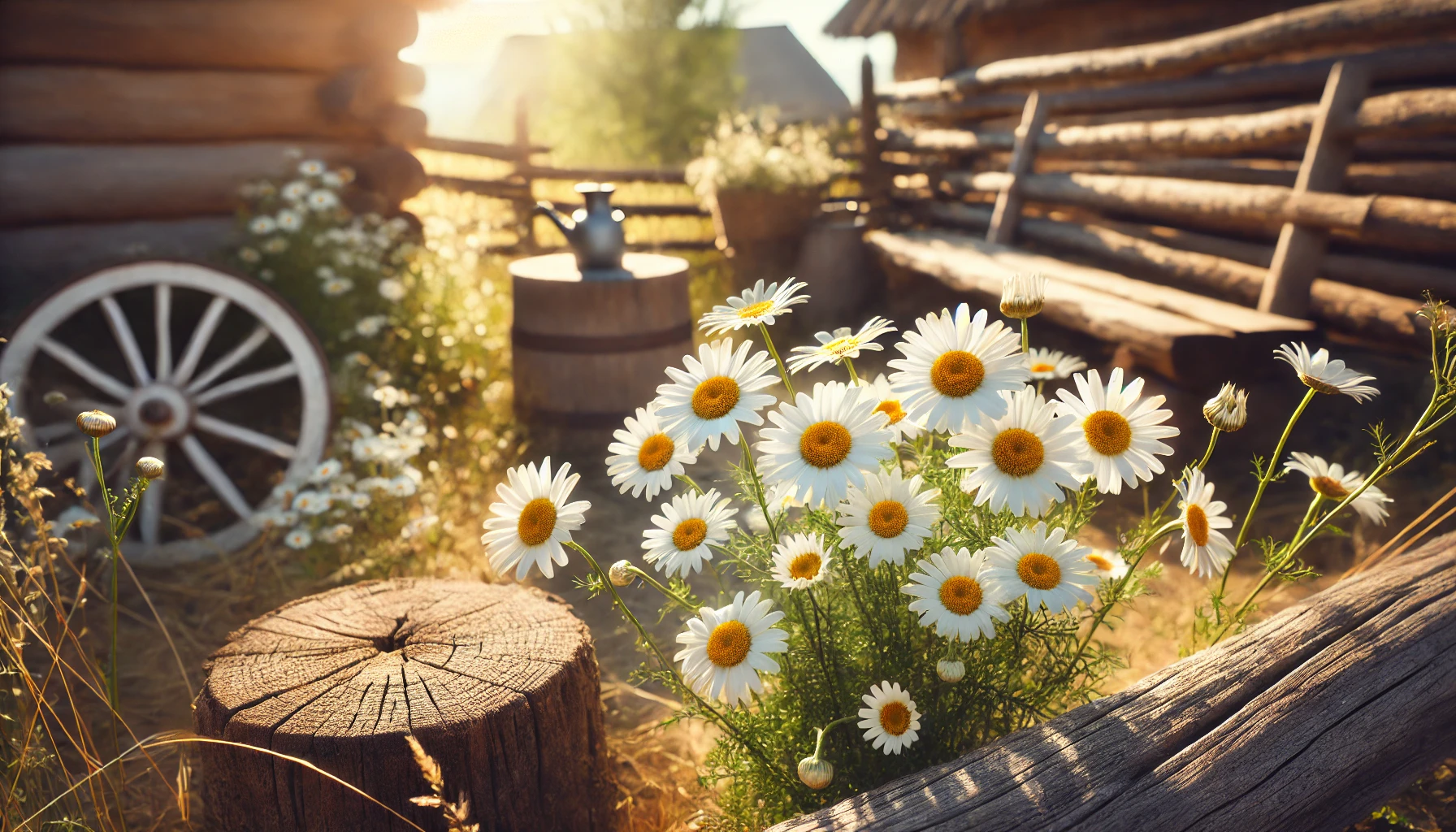
The Oxeye Daisy (Leucanthemum vulgare) is a bright, cheerful plant known for its classic white petals and yellow centers. It’s a perennial wildflower that adds charm to gardens and landscapes alike. Typically, Oxeye Daisies grow 1 to 3 feet (30 to 91 cm) tall, making them perfect for filling spaces with a natural, cottage-like appeal. These plants are resilient, and with proper care, they will return year after year to brighten your outdoor space.
History and Ideal Growing Conditions
The Oxeye Daisy has been a part of European landscapes for centuries. It has naturalized in North America, where it thrives in meadows and open fields. Oxeye Daisies prefer full sun but will tolerate partial shade. They’re not picky about soil type, making them an excellent choice for novice gardeners.
Oxeye Daisies are cold-hardy and can thrive in USDA zones 3 to 9. They tolerate temperatures ranging from 40°F (4°C) to 85°F (29°C). However, they do best in cooler climates. If you’re looking for a low-maintenance perennial with a natural look, the Oxeye Daisy is an ideal candidate for your garden.
Toxicity and Pets
Oxeye Daisies can pose a risk to pets, particularly dogs and cats. Ingesting the plant can cause vomiting, diarrhea, and lethargy in some animals. It’s important to be aware of these potential risks if you have pets that like to nibble on plants.
Safe Alternatives for Pet-Friendly Gardens
If you’re concerned about your pets, consider planting non-toxic alternatives like:
- Marigolds (Tagetes): Bright and pet-safe.
- Snapdragons (Antirrhinum): Lovely blooms without the toxicity.
- Sunflowers (Helianthus annuus): Tall, cheerful, and safe for pets.
Best Practices for Caring for Oxeye Daisies
Oxeye Daisies are easy to care for, and they require minimal effort once established. Below are some tips to keep them healthy and blooming all season.
Watering and Humidity
Oxeye Daisies prefer moderate watering. Keep the soil consistently moist, but avoid overwatering, as they are prone to root rot. Water deeply once a week or when the top 1 inch (2.5 cm) of soil feels dry. In humid climates, ensure good airflow to prevent fungal issues.
Soil, Light, and Temperature
These wildflowers aren’t picky about soil, but well-draining loam or sandy soil works best. They thrive in full sunlight but can tolerate partial shade. Aim for 6-8 hours of sunlight each day. They tolerate a range of temperatures but prefer cooler climates. Ensure your garden temperature stays between 40°F (4°C) and 85°F (29°C) for optimal growth.
Fertilizing
Oxeye Daisies generally don’t require much fertilization. If your soil is poor, a light application of a balanced fertilizer in early spring will help boost growth. Avoid over-fertilizing, as this can cause leggy growth and fewer blooms.
Common Problems and Remedies
Oxeye Daisies are generally hardy, but they can suffer from common garden pests and diseases.
- Aphids: Use insecticidal soap to combat infestations.
- Powdery mildew: Ensure adequate airflow and remove infected leaves.
- Root rot: Avoid waterlogged soil and ensure proper drainage.
Is Oxeye Daisy Invasive?
In certain regions, the Oxeye Daisy is considered an invasive species. Its ability to spread quickly and compete with native plants can be problematic.
Safe Alternatives for Invasive Areas
If Oxeye Daisies are invasive in your area, consider these non-invasive alternatives:
- Shasta Daisy (Leucanthemum × superbum): Similar look but less aggressive.
- Black-eyed Susan (Rudbeckia hirta): Bright and native to many areas.
Pruning Oxeye Daisies
Pruning is essential to keeping your Oxeye Daisies looking their best. Early summer, right after the first bloom, is the best time to prune.
Tools Needed
Use sharp, clean pruning shears or scissors. Always sanitize your tools before and after pruning to prevent disease spread.
Identify Areas to Trim
Cut back any dead, damaged, or diseased stems. Remove about one-third of the plant to encourage fuller growth. Thin out crowded areas to promote better air circulation.
Deadheading
Regularly deadhead faded flowers to encourage new blooms and keep your plant looking neat.
Prune Leggy Growth
If your daisies become leggy, trim back the stems by one-third to promote bushier growth.
Remove Damaged or Diseased Leaves
Cut away any leaves that show signs of disease or damage. This helps prevent the spread of issues like powdery mildew.
Shape the Plant
Prune for shape by trimming the sides evenly. This keeps the plant looking compact and neat.
Post-Pruning Care
After pruning, water your daisies thoroughly and add a layer of mulch to help retain moisture and prevent weeds.
Propagation and Benefits
Propagating Oxeye Daisies is easy through division or seed. In early spring, divide the plants by digging up the root clumps and separating them. Alternatively, collect seeds from dried flowers in late summer and plant them in well-drained soil.
Oxeye Daisies offer a range of benefits. They attract pollinators like bees and butterflies, making them great for boosting biodiversity in your garden. Plus, they’re drought-tolerant once established, making them a sustainable choice for low-water landscapes.
Final Thoughts
Oxeye Daisies are a delightful addition to any garden, offering low-maintenance beauty and attracting pollinators. While they are toxic to pets and can be invasive in some regions, with proper care and attention, these wildflowers can thrive in your garden for years to come. Consider planting non-invasive alternatives or pet-friendly varieties if needed. Enjoy the simple, classic beauty of Oxeye Daisies, and let them brighten your garden season after season.




Is Aloe Vera truly as beneficial for our skin and health as it is claimed to be, or are there any potential risks or downsides to using it regularly?
Hi there! I love Aloe Vera—I use it both externally and internally. That said, I’m not a naturopathic doctor, so please consult a professional for any medical advice. Thanks!